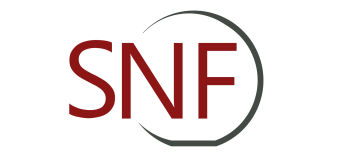Heidelberg MLA 150 - 2 (heidelberg2)
Overview
The MLA150 is a high speed direct write lithography tool extended by capabilities formerly only available on Mask Aligners. It can expose the patterns directly without prior fabrication of a mask resulting in a significantly shorter prototyping cycle. It offers topside alignment only , and a light source which generates sufficient dose to expose even thick and less sensitive resists. It also has high aspect ratio feature which will enable exposing features in a resist with aspect ratios of upto 10:1. The sample size range allowed on MLA150 are 2 mm X 2 mm to 150 mm X 150 mm and allowed thickness range from 100 um - 6 mm. MLA 150 provides for flexible change of pattern, distortion compensation and other software corrections. Currently, the exposure wavelength is 375 nm in the tool. Please contact Swaroop Kommera if you have any questions regarding the substrates or resists that can be used. The system can produce structures down to 600nm. The alignment accuracy can be as good as 250 nm under optimized conditions.
Once you are trained on the tool, please join the tool discussion list. The instruction and the lists are located at https://snfexfab.stanford.edu/snf/join/discussion-lists
Cleanliness:
Processing Technique(s)
Capabilities and Specifications
Lithography Specifications
Minimum Resolution:
0.60 μm
Exposure Wavelength:
375 nm
Substrate Type
Substrate Sizes
Maximum Load:
1
Notes:
Direct Write
Lab Organization, Location, and NEMO Information
Lab Organization:
Location:
NEMO Area:
nSiL: Cleanroom
NEMO ID:
heidelberg2
Training and Maintenance
Lab Facility:
Training Charges:
2.00 hours
Primary Trainer:
Primary Maintenance:
Steps to become a tool user
-
Become a member of SNF.
- "All Litho" class is required before training on any of the lithography tools. Please send an email to all-litho-training@lists.stanford.edu to sign up for the All Litho class. Read more here: All Litho class.
- Contact the primary trainer.
Please send the following information - substrate size and type, types of resists, resist thickness(es), minimum feature size, substrate relief (i.e., highest point – lowest point on substrate in the Z direction), Special situations - Whether you are planning to tape the substrate to another substrate etc - Please read through the material on the website https://snfexfab.stanford.edu/guide/equipment/heidelberg-mla-150-heidelberg The ones which are a must are
a – quick operating instructions https://snfexfab.stanford.edu/snf/operating-instructions/heidelberg-mla-...
b – precautions - https://snfexfab.stanford.edu/snf/operating-instructions/heidelberg-mla1...
c – quick user guide https://drive.google.com/file/d/14-6XASdEgSdccNiVl4L-sUwdNLw0yLRE/view
Please watch the training videos here https://www.youtube.com/playlist?list=PLaWbUJn2CJH-EBAyLsOjjrXAMUi5MQlXh - Once you send me the information, read the materials and watched the videos, please shadow a user atleast 2 times. It is best to shadow a user who has similar substrate dimension as yours. After the first shadowing, please go through the reading material again. Please shadow twice. Once you have done the shadowing, please let me know. The next step would be tool training session.


